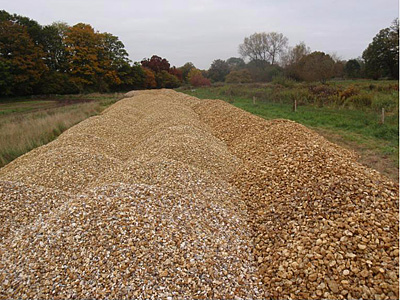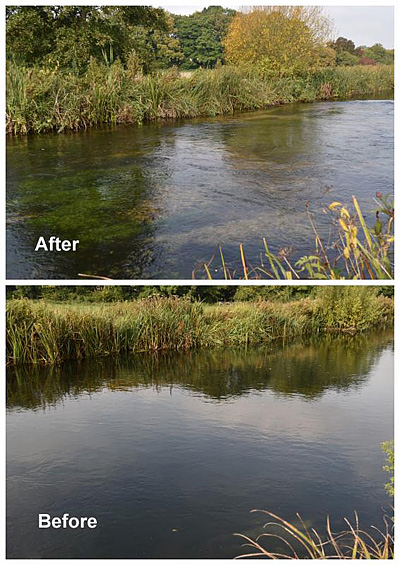You will read a great deal about river ‘restorations’; in plenty of cases it is nothing of the sort. Chalkstreams in particular are very much the creation of man and the rivers have been adapted over millennia for all sorts of purposes such as agriculture, navigation, milling and so on. Today we want something different from our rivers and so what we are really creating is something new that chimes with our current desires. I am not exactly sure under which heading the recent work on the famous Oakley beat at Mottisfont Abbey on the River Test would fall but I am certain that, as the home of dry fly fishing under Frederick Halford, he would have approved.
If you’ve ever fished the Oakley Stream you will know that the character of the beat very much divides into two sections; the first half is relatively shallow, with a fast flow over gravel and the river is very much part of the landscape. The top half is different in two ways: firstly, the river almost seems ‘above’ the surrounding meadows the banks built up like small dykes and secondly, the river itself is deeper, without the gravel bed. This is probably not accidental.

In all likelihood in the dim, distant past the gravel river bed was dredged out and the spoil used to build up the banks to their current height. I can’t be exactly sure why this was, but my guess is that the deepened main river was used as a reservoir to feed a now defunct side stream that branches off the Oakley Stream. What that side stream fed again I’m not sure but it could have been for water meadow flooding, fish rearing or powering a mill. These were fairly typical uses for a river in times when neither ecology nor fishing featured much in the calculation of many.
Today of course we feel differently; rivers are being changed to create a diverse habitat both in and along the river, with great emphasis on work that encourages a self-sustaining wild trout population plus spawning areas for salmon. With all that in mind a jointly funded project between the owners of Mottisfont Abbey (The National Trust) and the Environment Agency, using the brains in the hydrology department of Southampton University, has seen 1,600 tonnes of gravel put into the upper section of the Oakley Stream. It has all been part of a scheme under the guidance of Heb Leman, the man who runs the Test & Itchen Rivers Restoration Scheme and really we have him to thank.
Yes, you have probably guessed that what Heb and the team are essentially doing is putting back what was dredged out all those years ago. It is a fairly common sight along the chalkstreams these days. ARK (Action for the River Kennet) recently completed a similar project in Berkshire with almost twice that amount of gravel, though shockingly they were making good dredging done as recently as the 1970s.

The work itself is quick and straightforward. Bring in the gravel; large stones for the base and smaller stuff for the topping. Scoop it into the river with a big machine and then use a smaller one in the river itself to profile the gravel. Job done. Sometimes the banks are graded down to create a gradual slope but this wasn’t required at Mottisfont.
The before and after photos give you some idea of what is trying to be achieved. The after is a short section that was done on the Oakley ten years ago. In fact, it is a little on the shallow side so some of the gravel will be scraped off as part of this work.
The effect on the river is almost immediate; the heavy winter floods will re-profile the gravel yet again but in the exact way ‘nature’ likes it. But even before then the new gravel will show those tell-tale pock marks as both the trout and salmon get busy spawning. Some judicious planting ofranunculus will kick start the weed growth and I suspect in less than a year it will all look totally natural, which is exactly how it should be.
Flyfishing.co.uk is delighted to bring you Simon’s feature, which was first published in his ‘Fishing Breaks’ Newsletter.
Simon’s company, Fishing Breaks, based in the heart of the River Test Valley, offers some of the finest chalk stream fly fishing available in the UK – and a whole lot more. Check out their websiteHERE
Articles by the same author



















Comments (2 posted):